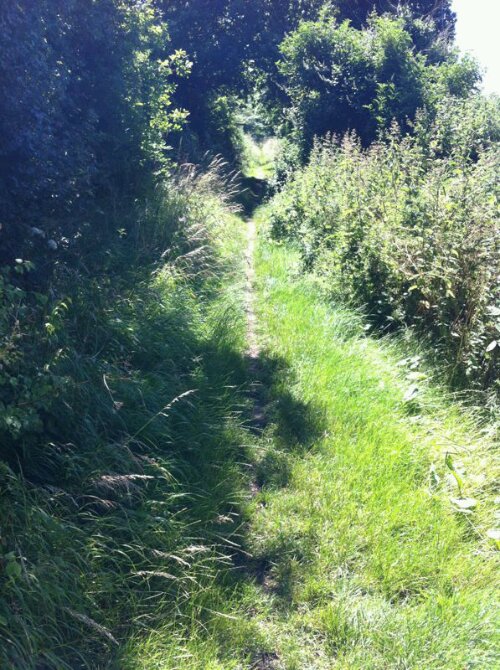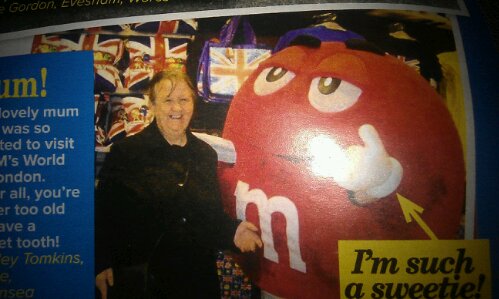It’s Wednesday again and time for my guest blogger to take over. Enjoy.
Last week’s subject got me thinking. As well as the weather aspect of rain it crops up in a lot of songs. I thought I’d look at just a few.
Remember the Travis song, Why Does It Always Rain On Me? (1999). Apparently, at the exact moment when they played the song, at Glastonbury in 1999, the weather duly obliged. There’s that other classic by B.J. Thomas, Raindrops keep falling on my head (1970). Rain is a mood-altering phenomenon: it can give us a down when we’re being soaked but give us a lift when we see those dark clouds disappearing and best of all when we see it stopping. Remember the Lighthouse Family and the lines from their song Lifted: “I wouldn’t say I’m mad about the rain, But we’ll get through it anyway.” One thing’s for sure as BJT sang, we’ll never stop the rain by complaining; so don’t – move on, it will stop (eventually)!
Garbage (the group) had a song called I’m only happy when it rains, in 1995, which seems to be a similar sentiment to Gene Kelly, (remember last week’s post).
Remember the opening bars of The Doors’ song, Riders on the Storm? Must be one of the most atmospheric sounds of rain & thunder on record. Only managed to reach No.22 in Britain even with two re-issues. (However, here’s a good one – If you watch this vid of the song: http://www.youtube.com/watch?v=lS-af9Q-zvQ on Youtube, at about 2m 46s, you will see Jim Morrison lighting a cigarette not far from the petrol pump in a garage where he’s stopped to get fuel. Those were the days, eh? Risk of explosion – who me? Where?)
I don’t know much about the weather in the USA apart from the stuff that makes the news over here. In 1972, when Rapid City (South Dakota) lost 238 inhabitants due to flooding lasting 2 days, Albert Hammond was singing about people saying, It never rains in Southern California but then says “Girl don’t they warn ya – it pours, man it pours”. Any readers from California tell me which is right?
As an aside, did you know that hurricanes don’t actually get named. Yes, I know, you can think of plenty but did you realise how they originate. A tropical storm is named when it reaches a sustained speed of 39mph; if that storm then reaches a sustained speed of 74mph it becomes a hurricane and keeps the name it was given as a storm. Also did you know that the names for Tropical Storms follow a prescribed pattern: the first storm of any year gets a name beginning with “A”, the second a name beginning with “B” and so on. (So in 2012 they went like this: Alberto, then Beryl, Chris, Debby etc). Q, U, X, Y and Z are not used.
Furthermore, if the year is an even number, men’s names are used for the 1st, 3rd, 5th, 7th etc storms; if the year is odd women’s names are used for the 1st, 3rd, 5th, 7th etc storms. The names are pre-determined so I can tell you that, if there are 21 storms in 2012 that reach hurricane force, no.21 will be called Hurricane William. I can also tell you that the second storm (poss hurricane) in 2016 will be called Bonnie and the 11th will be Karl. (The full table, which goes to 2017, can be found at http://geology.com/hurricanes/hurricane-names.shtml).
Ok, so back to the rain. Are you a bit like the Carpenters – you know, Rainy days and Mondays always get you down? If you’ve never listened to The Cascades’ song Rhythm of the Rain, watch (listen actually, as it’s it’s only a still pic) this one http://www.youtube.com/watch?feature=endscreen&NR=1&v=l1PJ9mF2H2Q. (A brief count of the different uploads of just this one Cascades song by various sources comes to about 3.5 million views).
Of course you’re probably wondering about the wettest place on Earth: where & how much, obviously?
Here’s the wettest place in Britain: Dalness in Scotland

Looks beautiful doesn’t it? It gets 130 ins (3.3 metres) of rain per year. That means an average of nearly 11 ins per month.
In second place is Seathwaite in the Lake District which is the wettest place in England and here it is.

Seathwaite (in Borrowdale) gets 124 ins of rain per year.
Both of these pale into insignificance when we look at the wettest places in the world. The top two are in India and get 467 ins (11871mm) & 463 ins (11777mm) – that’s more than 1 in (25.4mm) per day! For the UK 124 ins & 130 ins are enough to be going on with. Definitely worth keeping an umbrella with you I’d say.
What a good job this lady took her umbrella with her!! Just think what might have happened if she’d forgotten it.


And this chap too. I’d like to see him do a Gene Kelly (see last week’s post):
So please, if you think it might rain don’t forget that umbrella!
A novel written in 1830 by Edward Bulwer-Lytton (1803-1873) called Paul Clifford begins with these very famous lines:
“It was a dark and stormy night; the rain fell in torrents — except at occasional intervals, when it was checked by a violent gust of wind which swept up the streets (for it is in London that our scene lies), rattling along the housetops, and fiercely agitating the scanty flame of the lamps that struggled against the darkness.”
The novelist’s name has been immortalised in the annual Bulwer-Lytton Fiction Contest. The English Dept of San Jose University (California, you remember where Albert Hammond sang that it never rained) sponsor it and entrants have to compose the opening sentence to “the worst of all possible novels”.
This list has done the rounds a bit so you may have come across some of them before but here are the 10 entries starting at no.10 and working up to the winner (of 2010 possibly):
10. “As a scientist, Throckmorton knew that if he were ever to break wind in the echo chamber, he would never hear the end of it.”
9. “Just beyond the Narrows, the river widens.”
8. “With a curvaceous figure that Venus would have envied, a tanned, unblemished oval face framed with lustrous thick brown hair, deep azure-blue eyes fringed with long black lashes, perfect teeth that vied for competition, and a small straight nose, Marilee had a beauty that defied description.”
7. “Andre, a simple peasant, had only one thing on his mind as he crept along the East wall: ‘Andre creep. Andre creep. Andre creep.'”
6. “Stanislaus Smedley, a man always on the cutting edge of narcissism, was about to give his body and soul to a back alley sex-change surgeon to become the woman he loved.”
5. “Although Sarah had an abnormal fear of mice, it did not keep her from eeking out a living at a local pet store.”
4. “Stanley looked quite bored and somewhat detached, but then penguins often do.”
3. “Like an overripe beefsteak tomato rimmed with cottage cheese, the corpulent remains of Santa Claus lay dead on the hotel floor.”
2. “Mike Hardware was the kind of private eye who didn’t know the meaning of the word ‘fear’; a man who could laugh in the face of danger and spit in the eye of death– in short, a moron with suicidal tendencies.”
And the winner is. . .
1. “The sun oozed over the horizon, shoved aside darkness, crept along the greensward, and, with sickly fingers, pushed through the castle window, revealing the pillaged princess, hand at throat, crown asunder, gaping in frenzied horror at the sated, sodden amphibian lying beside her, disbelieving the magnitude of the frog’s deception, screaming madly, ‘You lied!'”
I like no.9 for its simplicity (and of course no.1) but see what you think.
I couldn’t finish without quoting Walter Sichel (1855-1933):
“The rain, it raineth on the just
And also on the unjust fella:
But chiefly on the just, because
The unjust steals the just’s umbrella.”
(He is of course putting his own comedic spin on the last part of the verse from the Gospel of Matthew Ch 5 verse 45 which has the words: “For He (God) makes His (God’s) sun rise on the evil and the good, and sends rain on the just and on the unjust” (I’ve added words in brackets for explanation purposes).
And that’s it for our second look at rain.
Hope I’ve whet your appetite (see what I did there?) for some further research.






















































